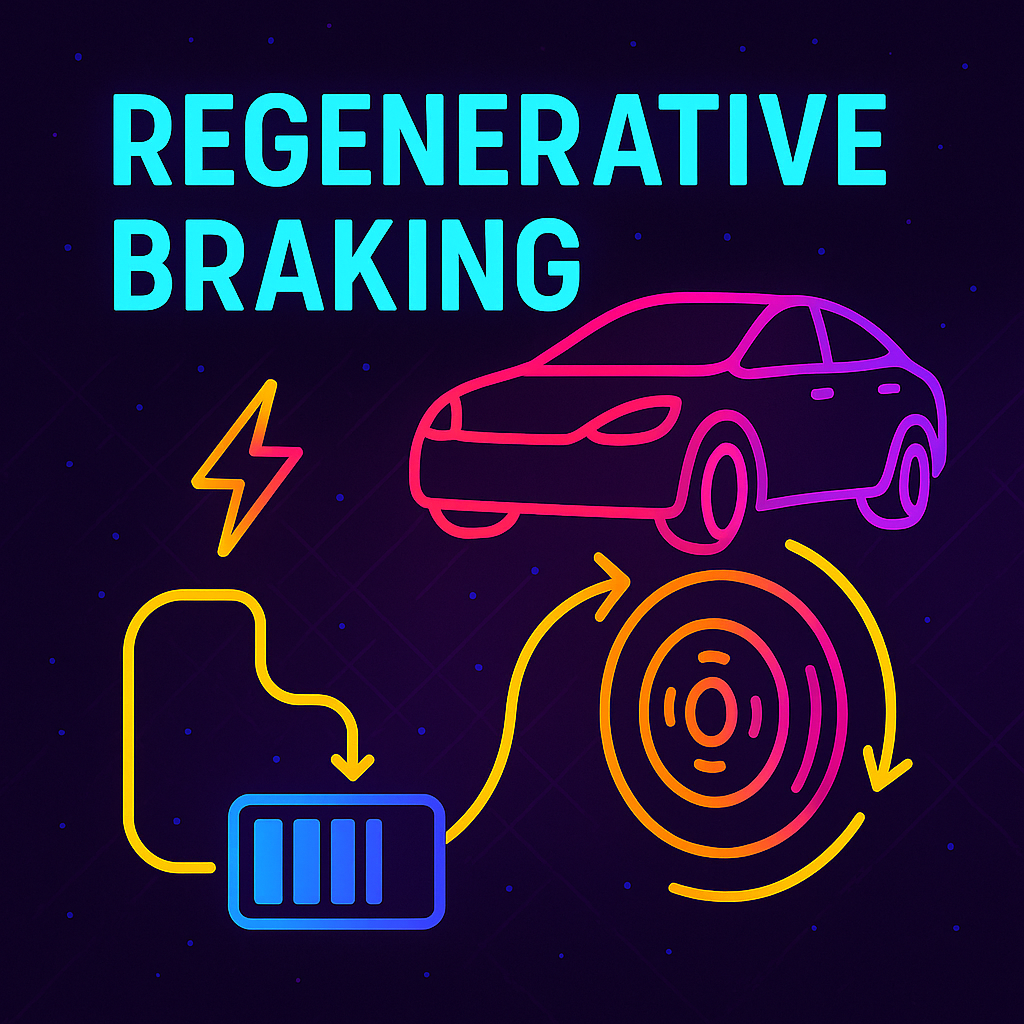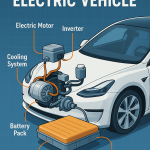One of the standout innovations in electric vehicle (EV) technology is regenerative braking—a system that not only helps slow down the car but also recovers energy in the process. Unlike conventional braking systems that rely solely on friction to stop the vehicle, regenerative braking harnesses the kinetic energy that would otherwise be wasted during deceleration. This article explores how regenerative braking works, its benefits, and its impact on battery efficiency and brake wear.
The Principle Behind Regenerative Braking
In a conventional internal combustion engine vehicle, pressing the brake pedal activates brake pads that create friction with the wheels, converting kinetic energy into heat—a form of energy that is lost. In contrast, EVs use an electric motor to help decelerate the car and recapture part of this energy.
Regenerative braking works by reversing the function of the electric motor. When the driver lifts their foot off the accelerator or applies the brake, the motor switches to generator mode. Instead of consuming electricity to produce motion, it uses the motion of the wheels to generate electricity, which is then sent back to the battery for storage and later use.
Efficiency and Energy Recovery
Regenerative braking doesn’t capture all of the kinetic energy, but it can recover a significant portion—typically between 10% and 30%, depending on driving style, terrain, and system design. In city driving, where frequent starts and stops are common, the energy recovery potential is particularly high.
Some EVs allow drivers to adjust the strength of regenerative braking, offering different modes ranging from mild deceleration (coasting feel) to aggressive one-pedal driving, where the car slows down dramatically when the accelerator is released, eliminating the need to use the brake pedal in most situations.
Benefits for Battery Efficiency
By capturing and storing kinetic energy, regenerative braking improves the overall energy efficiency of an electric vehicle. It reduces the amount of energy needed from charging and extends driving range, especially in urban environments with frequent stop-and-go traffic.
Although the energy recovered isn’t enough to dramatically extend range on its own, it helps make EVs more energy-efficient and environmentally friendly compared to traditional cars. Over time, this energy savings can add up, especially for daily commuters.
Impact on Brake Wear and Maintenance
Another significant advantage of regenerative braking is reduced wear on traditional braking components. Since the electric motor handles a large portion of the deceleration, brake pads and discs are used less frequently. This translates into less frequent maintenance, lower operating costs, and longer-lasting brake systems.
However, because friction brakes are still essential for emergency stops or high-speed deceleration, they must be maintained in working order. Some EVs include software that occasionally uses the friction brakes even when not needed, just to keep them functional and prevent corrosion.
Challenges and Limitations
Despite its advantages, regenerative braking does have limitations. Its effectiveness depends on battery state-of-charge: if the battery is full, the system has limited capacity to store additional energy. Cold weather can also affect battery performance and reduce regenerative efficiency.
Furthermore, during hard braking or emergency stops, regenerative systems are not strong enough to bring the car to a complete stop quickly, so they work in tandem with mechanical brakes in what’s known as a blended braking system.
Conclusion
Regenerative braking is a remarkable feature that enhances the efficiency and sustainability of electric vehicles. By converting kinetic energy into electricity during deceleration, it contributes to longer driving ranges, reduced energy consumption, and lower maintenance costs. While it’s not a complete substitute for mechanical braking, its role in improving energy efficiency and reducing environmental impact makes it a cornerstone of modern EV technology.
As battery technologies and vehicle software continue to evolve, the efficiency and functionality of regenerative braking systems will only improve, further solidifying their place in the future of transportation.



emm its very very interesting…
And now just picture the mechanic changing the pads on that thing… 😂
lol regen brk makes EVs lit 😂
ehh thats cool! but i got nada
regens? u think they save? nah. 😬 wth.